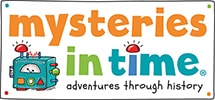Ancient Rome Facts for Kids
1. Architecture & Engineering
The Romans are known for their engineering and architectural skills. They built many impressive structures such as the Colosseum (built around 70 BC), which was a large amphitheatre used for gladiatorial contests and other public spectacles. The Colosseum was capable of seating 50,000 to 80,000 people and was considered one of the greatest engineering feats of the ancient world.
The Romans also built aqueducts to bring water from distant sources to the city and roads that were used for transportation and communication throughout the empire.
2. Roman soldiers
The Roman army was one of the most powerful and well-trained armies in the ancient world. It was made up of both citizen soldiers and professional soldiers. The Roman army was known for its discipline, organisation and tactics. They were equipped with weapons such as gladii (short swords), pila (javelins), and scutum (shields) and were trained to fight in a formation called the “testudo” or “tortoise” formation, which protected soldiers from arrows and other projectiles.
Roman soldiers were given excellent training and had to keep fit. They often marched 20 miles (32 km) in one day with heavy armour.
3. Roman numerals
We still use Roman numerals today instead of numbers on many clock faces, including London’s Big Ben!
4. Julius Caesar
Julius Caesar became the dictator of Rome in 44 BC, after he defeated his rivals in a civil war. Caesar brought many reforms and expanded the Roman Empire through military conquests, but he was assassinated the following year.
His death led to a power struggle among his supporters, which eventually resulted in the formation of the Roman Empire. The Roman Empire lasted for over 500 years. It was ruled by an emperor, who had absolute power.
5. The Republic
The Roman Republic was established in 509 BC, after the Romans overthrew their Etruscan conquerors. The Roman Republic was ruled by a group of elected officials called senators. The Roman Republic had a complex system of government, with two consuls who were elected annually and held the highest office in the state.
The Roman Republic also had a system of checks and balances, with the senate and the popular assembly having different powers.
6. Rome
Rome was originally a small city-state but eventually grew to become the largest city in the world at the time, with a population of over one million people. It was known for its impressive architecture, engineering and art.
The Romans were skilled in building roads, aqueducts, public baths, and monumental structures such as the Colosseum.
7. Seven Hills
Ancient Rome was a powerful civilisation that existed over 2,000 years ago in the Mediterranean region. It was located on the Italian Peninsula and on the banks of the Tiber River.
It was also surrounded by seven hills, which is why it was known as the “City of Seven Hills.” Rome was a republic before it became an empire.
8. Diverse
The Roman Empire was vast and diverse, with a population of over 60 million people, and it controlled much of Europe, North Africa and the Middle East.
The Roman Empire was a melting pot of cultures and languages, with people from many different ethnic backgrounds and religions living together.
9. Division
The Roman Empire was divided into two parts in AD 395: the Western Roman Empire and the Eastern Roman Empire.
The Eastern Roman Empire, also known as the Byzantine Empire, lasted for another thousand years.
10. Fall of an Empire
The Roman Empire fell in AD 476, due to a combination of internal decline and invasions by barbarian tribes. The empire had become too large and difficult to govern, and the economy had declined.
The invasions of barbarian tribes such as the Visigoths and the Huns had weakened the empire, and it was unable to defend itself. This led to the fall of the Western Roman Empire and the beginning of the Middle Ages.

